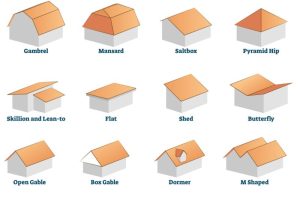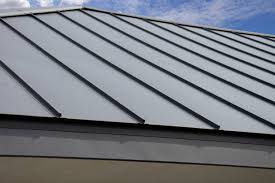
Roof Types: 15 Most Common Styles


Traditional Roof Styles in Eastern Ontario
Eastern Ontario’s housing stock reflects the region’s mix of heritage charm and modern construction. Many homes in Belleville, Prince Edward County, Quinte West, and surrounding rural areas feature gable and hip roofs, which are prized for their ability to shed snow and rain efficiently—a necessity in Ontario’s four-season climate. Older farmhouses and century homes often showcase steeply pitched gables, sometimes with dormers, echoing a Victorian or Gothic Revival influence. In contrast, mid-century bungalows and suburban builds lean toward low-slope gable or hip designs, offering simpler lines and easier maintenance. More contemporary custom homes may incorporate multi-gabled or complex rooflines, integrating dormers, shed sections, or even flat roof portions for a modern aesthetic.
Asphalt Shingles: The Local Standard
The most common roofing material in Eastern Ontario is asphalt shingles, chosen for their affordability, availability, and relative durability. Architectural or laminate shingles are especially popular, offering better wind resistance and a dimensional look compared to traditional three-tab styles. Given the region’s climate—hot summers, heavy autumn rains, and snowy winters—homeowners often select higher-quality shingles rated for wind uplift and ice dam resistance. Many manufacturers offer warranties of 25–40 years, making asphalt shingles a practical and versatile choice for both rural and urban properties.
Metal Roofing: Longevity and Rural Appeal
In rural Eastern Ontario, especially in agricultural areas like Hastings and Lennox & Addington counties, metal roofing is a familiar sight. Standing seam or ribbed metal panels provide exceptional longevity (often 40–60 years) and superior protection against heavy snow loads. Their slick surface allows snow to slide off more easily, reducing winter maintenance. Metal roofing is also fire-resistant and increasingly available in attractive colours and profiles, making it appealing for modern cottages, barns, and even upscale custom homes seeking a sleek aesthetic.
Cedar, Slate, and Specialty Materials
For heritage restorations and higher-end properties, cedar shakes, slate, and composite alternatives are sometimes used. Cedar provides a rustic, natural look that fits beautifully among Prince Edward County’s wineries, cottages, and historic towns. Slate, though less common due to cost, can be found on historic churches and prestigious homes, offering unmatched longevity and timeless appeal. More recently, composite materials have emerged as practical substitutes, offering the look of slate or cedar with improved resistance to rot and weathering. Flat roofs, more common in modern infill or urban projects, are often finished with modified bitumen, EPDM rubber, or TPO membranes, designed to withstand pooling water and temperature swings.
Climate Considerations and Regional Choices
Eastern Ontario’s roofing choices are heavily influenced by climate. Ice dams, freeze-thaw cycles, and high humidity demand proper underlayments, ventilation, and insulation to protect against leaks and premature wear. Many homeowners also consider energy efficiency: lighter-coloured shingles or reflective metal roofs can help keep attics cooler in summer, while durable materials minimize the long-term cost of replacement. Ultimately, the roof style and material chosen often balance aesthetics, budget, and practicality, reflecting both the architectural character of the region and the demands of the local climate.

